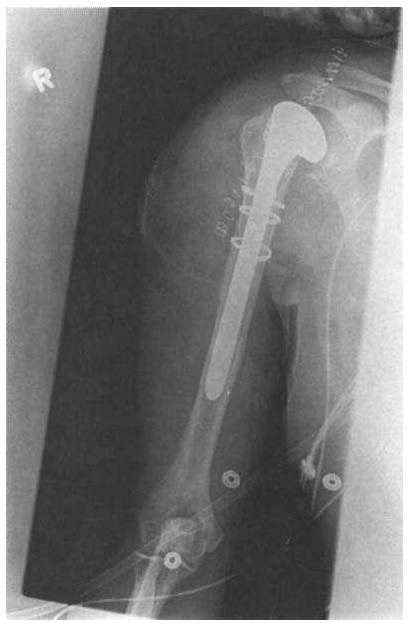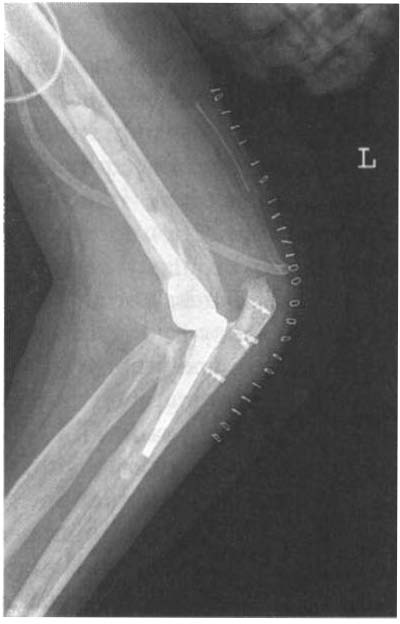i bc27f85be50b71b1 (63 page)
Read i bc27f85be50b71b1 Online
Authors: Unknown

• With patients who have excessive edema with exercise,
therapy sessions should be limited in duration and should
concentrate on functional mobility. The use of a CPM in
submax.imal ranges in conjunction with ice will maintain
knee ROM while assisting in edema reduction.
• If a brace or knee immobilizer is being used, the therapist should always check that ir is applied properly. If the brace is not appropriately fitted to the patient or applied
properly, it may keep the knee flexed. The therapist should
adjust the brace or immobilizer ro be certain that knee
extension is maintained when worn by the patient. Nursing staff may need to be educated to different types of braces and the proper donning and doffing of the brace.
• Treatment sessions should be coordinated with administration of pain medication to increase patient comfort
and compliance with ROM exercises.

202
AClJTE CARE HANDBOOK FOR PHYSICAL THERAPISTS
Shoulder Arthroplasty
Total shoulder arthroplasty (TSA) is indicated for patients with severe
pain and limited ROM caused by osteoarthritis, rheumatOid arthritis,
fracture, AVN, or traumatic arthritis. Conservative treatment should
attempt to alleviate pain while increasing function. Only when these
measures have failed should TSA be considered. If only the humeral
head shows significant degeneration, a shoulder hemiarthroplasty
may be consIdered. Prosthetic wear after TSA or shoulder hemiarthroplasty is of less concern than after THA or TKA, because the shoulder is nOt a weight-bearing structure." The goal of surgery is to
relieve pain and regain lost function.
TSA involves the replacement of the glenoid articulating surface and
the humeral head with prosthetic components. A polyethylene glenoid
unit with metal backing and keel articulates with a humeral prosthesis.
Fixation of these components is either cemented or press-fit, processes
similar to those in the other joint replacement sllrgeries.48
There are three types of TSA prostheses available: unconstrained,
semiconstrained, and constrained. The mOSt commonly used prosthesis is the unconstrained type that relies on soft tissue integrity of the rotaror cuff and deltoid muscles. If these structures are insufficient or damaged, repair may take place during shoulder arthroplasty surgery and may prolong rehabilitation. The success of all TSA involves accurate surgical placement of the prosthesis and the
ability of the surgeon to reconstruct the anaromic congruency of the
joint. Proper orientation of the prosthetic components and preservation of structural length and muscular integrity are key aspects of the surgery that predispose favorable outcomes. The technical skill
of the surgeon and advances in prosthetic components have
improved outcomes with TSA. With appropriate patient selection
and a properly functioning rotatOr cuff, a patient with a TSA can be
rehabilitated to improve ROM and strength equal to that of the
unaffected side."
A proximal humeral hemiarthroplasty (Figure 3-17) can be performed when arthritic changes have affected only the humeral head.
The humeral head is replaced with a prosthetic component through a
similar technique as in TSA. Results are dependent on the integrity of
the rotatOr cuff and deltoid, the precision of the surgeon, and the willi ngness of the patient to commit to a continual rehabilitation program. Rehabilitation of the shoulder hemiarthroplasty is similar to that of a TSA.


MUSCULOSKELE.TAL SYSTEM
203
Figure 3-17. Proximal hemiarthroplasty of the right shoulder.
Physical Therapy Intervention after Shoulder Arthroplasty
The rehabilitation after TSA or shoulder hemiarthroplasty should
emphasize functional independence and patient education on therapeutic exercise. The physical therapist should confirm the presence of any precautions with the surgeon and educate the patient in passive
and active-assisted ROM exercises to prevent the formation of adhesions. The stability of the shoulder is dependent on the rotator cuff and deltoid muscles, and the rehabilitation program may be dictated
by their integriry. Maximum results from a TSA occur approximately
18-24 months after the surgery and a dedicated program of physical
therapyY
• Edema can be controlled with wrist and elbow ROM exercises
and ice packs used in conjunction with elevation.
• A sling may be used for patient comfort but should be discontinued as soon as possible, following surgeon protocol, to increase ROM and strength. If there was extensive repair to the rotator cuff
or deltoid, an abduction brace may be prescribed.


204 AClJTE CARE HANDBOOK FOR PHYSICAL THFRAPISTS
• The patient should be taught wand and pendulum exercises to
promote shoulder flexion and abduction. With most TSAs, active
external rotation should be performed in a pain-free ROM, but
active abduction and flexion should be limited according to surgeon protocol. Outpatient physical therapy should begin shortly after the follow-up visit with the surgeon.
Clinical Tip
•
A shoulder CPM can be ordered by the surgeon and
applied postOperatively or for home use to assist with
ROM and to prevent formation of adhesions.
• The physical therapist should initiate a consult for
occupational therapy to instruct the patient on ADLs,
especially if the patient'S dominant arm is affected.
Total ELbow Arthroplasty
The reliability of TEA has progressed to outcomes comparable to
those of other types of joint arthroplasty.·' Indications for TEA are
pain, instability, and elbow ankylosis. The parient population thar
demonstrates optimal results after TEA is those severely affected by
rheumatoid arthritis,50 Post-traumatic arthritis is also an indication
for elbow arthroplasty; however, patient satisfaction and outcomes
are inferior compared to those with rheumatoid arthritis.51 The goal
of TEA is the restoration of function through decreasing pain and
increasing joint ROM and stability.
Early results of TEA with a fully constrained prosthesis have shown
aseptic loosening. Conversely, an unlinked or less-constrained prosthesis demonstrates a decreased rate of loosening but has showed increased rates of failure secondary to weak collateral ligaments, anterior capsule, and reduced bone stock. Therefore, a semiconstrained prosthesis (Figure 3-18) is now favored for TEA to dissipate stress to
the muscular and ligamentous structures surrounding the elbow, thus
decreasing the rate of prosthetic loosening,52 Unconstrained or resurfacing arthroplasties attempt to duplicate the anatomic surfaces within the joint and depend on intact ligaments and the anterior capsule for
stability. A semiconstrained prosthesis may have a metal-to-polyethy-

